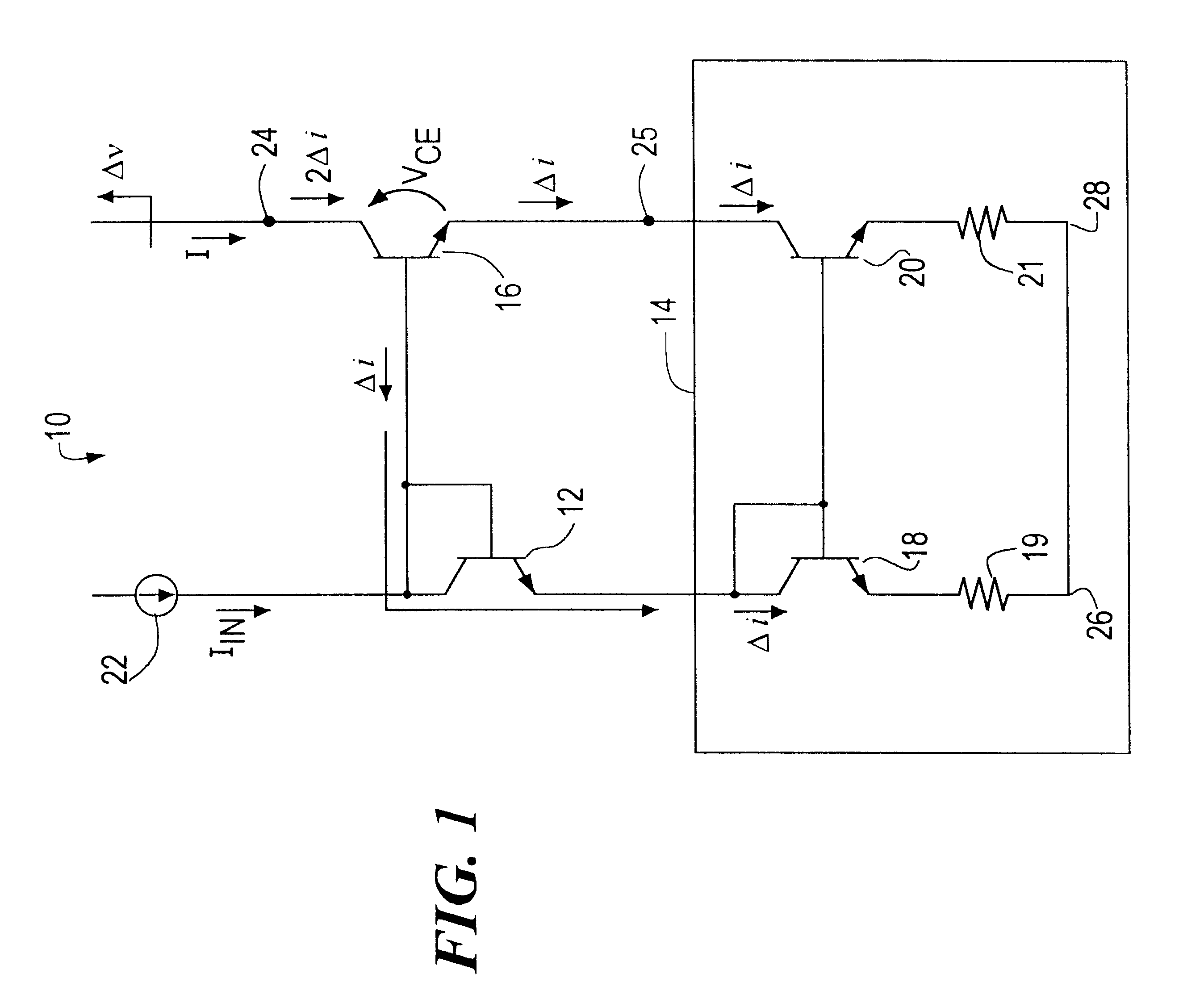Early voltage and beta compensation circuit for a current mirror
- Summary
- Abstract
- Description
- Claims
- Application Information
AI Technical Summary
Benefits of technology
Problems solved by technology
Method used
Image
Examples
Embodiment Construction
Prior art uncompensated cascode current mirror 10, FIG. 1, includes input transistor stage 12, simple current mirror 14 and output transistor stage 16. Current mirror 14 includes first transistor stage 18 and second transistor stage 20. Current mirror 14 may also include degeneration resistors 19 and 21, their presence improving the accuracy of current mirror 14. Current mirror 14 provides a current gain substantially equal to Y which is the ratio of the collector current of transistor 20 to the collector current of transistor 18. Transistors 12 and 18 form first leg 26, and transistors 16 and 20 form second leg 28 of cascode mirror 10. Legs 28 and 26 are defined to carry a normalized nominal current of Y to 1, respectively. While each transistor is shown to include an NPN semiconductor device, they may equally be PNP semiconductor devices. In any case, both types of devices, which include a control terminal, and first and second load terminals, e.g., base, collector and emitter, wi...
PUM
 Login to View More
Login to View More Abstract
Description
Claims
Application Information
 Login to View More
Login to View More - R&D
- Intellectual Property
- Life Sciences
- Materials
- Tech Scout
- Unparalleled Data Quality
- Higher Quality Content
- 60% Fewer Hallucinations
Browse by: Latest US Patents, China's latest patents, Technical Efficacy Thesaurus, Application Domain, Technology Topic, Popular Technical Reports.
© 2025 PatSnap. All rights reserved.Legal|Privacy policy|Modern Slavery Act Transparency Statement|Sitemap|About US| Contact US: help@patsnap.com



